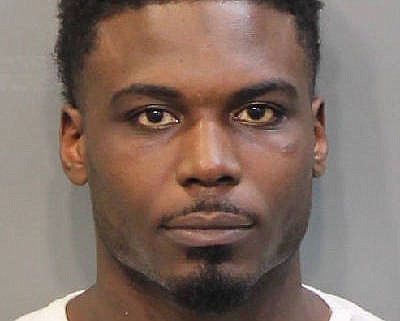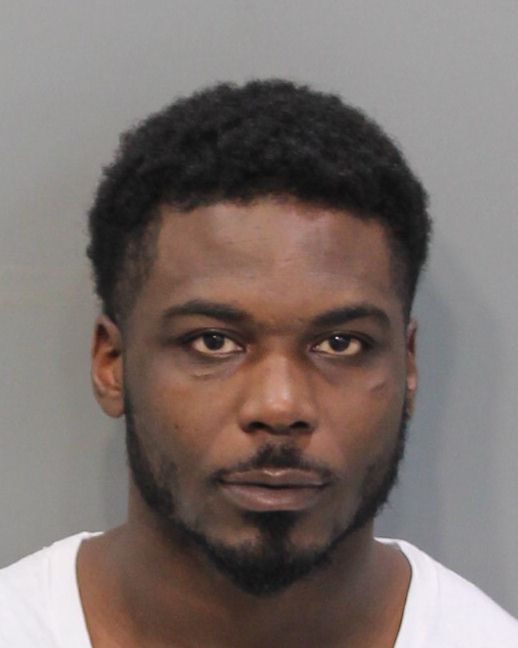A forensic scientist testifying on behalf of the defense Friday contradicted Adrian Darnell Nixon's claim that Jeremy Clark was shot by a person reaching in through the passenger's side window of the Dodge Challenger the defendant was driving, saying it did not jibe with him.
Nixon, 33, was in Hamilton County Criminal Court for the fourth day of his trial and heard Jay Jarvis say the way Nixon repeatedly claimed Clark was shot could not have been possible, according to the evidence.
"It didn't really jibe with me that a person who was shot in the head would be leaning over speaking to someone in a car," Jarvis, who once worked with the Georgia Bureau of Investigation, said during direct examination.
However, Jarvis also contradicted the state's theory that Nixon shot Clark from the driver's seat of the Dodge. Jarvis said Clark was shot from outside the vehicle, further testifying that the shooter had to be standing by the driver's side.
Nixon, of Chattanooga, is facing first-degree premeditated murder charges in connection with the shooting death of Clark, also of Chattanooga, at J&J Lounge at 2208 Glass St. shortly after midnight on July 29, 2016. If found guilty, Nixon faces life in prison with the possibility of parole after 51 years.
"It doesn't matter," Jarvis said when Executive Assistant District Attorney Cameron Williams asked about Nixon's repeated claims of someone reaching into the vehicle and shooting Clark. "He had to be wrong."
Jarvis has more than 40 years of experience in forensic science, owns and operates ARMA Forensics and has testified in over 700 trials. Jarvis often works with defense attorneys in Georgia and Tennessee.
"I'm sorry the evidence does not support [Nixon's] theory," Jarvis said. "It's an implausible theory."
Jarvis also testified that he would expect a large cloud of gunshot residue left behind in the vehicle if a gun had been discharged four to five times. He added that empty shell casings would have been found inside the vehicle as well.
Nixon's ex-girlfriend, Denise Flanagan, testified Wednesday to cleaning the Dodge Challenger during the afternoon of July 29 as she was getting ready to have a birthday weekend with her friends in Atlanta.
"If they vacuumed the upholstery, that would make it go away," Jarvis said of possible gunshot residue while being cross-examined by Williams.
"Were you aware that an individual vacuumed the inside of that car?" Williams asked.
"I don't recall," Jarvis said.
"Is it possible that the shooting began inside the vehicle?" Williams asked again.
"Not in my opinion," Jarvis said.
Late Thursday, the jury heard testimony from forensic pathologist Steven Cogswell, with the Hamilton County Medical Examiner's Office, who performed the autopsy on Clark.
Cogswell said that it "is pretty difficult [for someone] to do" in regards to Nixon's claims that someone reached from the outside of the passenger side through the interior of the vehicle and shot Clark.
"It's not impossible, but it's unlikely," Cogswell said.
He noted the constrictions of the small area of the driver's window that the shooter would have to maneuver through if that were the case.
"If you're the driver of the vehicle, you're not constrained," Cogswell said. "As he moves, you can follow and continue shooting."
Clark was shot five times, four times in the chest and once in the head. The head wound entered above the left ear and exited just above the left eyebrow. Cogswell said that was most likely the last shot as his body was moving with every shot.
"The most likely scenario is the person in the driver's seat is doing the shooting," Cogswell said.
A motion for a mistrial by the defense was denied by Judge Don W. Poole on Friday morning.
"I think he's had a fair trial," Poole said before denying the motion.
During closing arguments, the prosecution turned the jury's attention to the victim, the actions taken by the defendant on the night of the incident and the witnesses. Meanwhile, the defense asked the jury to use its common sense as it deliberated.
"This case is about Jeremy Clark," Prosecutor AnCharlene Davis said. "He was happy, he was carefree, and as he walked out of that door with his friend, he had no idea that would be the last moments, the last few moments, before he was gunned down in the parking lot."
Davis urged the jury to remember the demeanor of all the witnesses while on the stand.
"They're scared," she said.
Defense attorney Bill Speek brought up the state's failure to find a weapon on Nixon or prove he ever had one.
"How can you convict someone of first-degree murder if you can't even put a gun in his hand?" Speek said. "The nature of this case is a tragedy. One life was lost, the other is on the line."
Williams began his closing argument by pointing out the demeanor of each of the three eyewitnesses as they took the stand during the trial.
"Snitches get stitches, and they all know that," Williams said. "That's why they didn't want to testify. Sometimes smart people do dumb things. And that dumb thing is that he murdered Jeremy Clark, with intentionality and premeditation. Ladies and gentlemen of the jury, please find Adrian Nixon guilty of first-degree murder."
The jury began to deliberate after 4:30 p.m Friday.
Contact La Shawn Pagán at lpagan@timesfreepress.com or 423-757-6476. Follow her on Twitter @LaShawnPagan.

